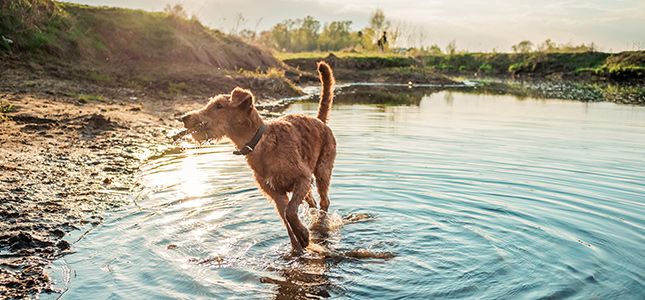
Leptospirosis: The Cause, Symptoms and Treatments of this Disease in Animals
Leptospirosis is a disease that can affect all animals, both domesticated and wild. Over the past few years the disease has become more common in pets. It can be deadly so it’s important for pet owners to identify the symptoms of Leptospirosis.
What is leptospirosis?
Leptospirosis is a contagious and serious bacterial infection caused by a spiral shaped microorganism. Leptospirosis can occur in both domestic species (dogs, horses, cows etc.) as well as wild life such as but not limited to small rodents, raccoons, and foxes as well as in humans. The organism is transmitted through contact with infected animal urine or contaminated soil and water.
Leptospirosis in Dogs
Leptospirosis occurs in dogs most commonly in the early spring and fall but can be diagnosed year-round depending on the climate of the region you live in. Both urban and suburban pets are susceptible to this disease. Dogs frequently become infected when they come in contact with water or soil that has been infected by Leptospira-infected urine from a reservoir host, such as a wild rodent.
Leptospirosis vaccine
Although vaccines are now available due to the high number of bacterial strains it is impossible to immunize against all types of Leptospirosis. Any dog that lives in a high-risk area should be routinely vaccinated against this disease. However, the effectiveness of these vaccines is not clear. Currently available vaccines probably do not offer complete protection against all strains of the bacteria. Decreasing exposure to stagnant water and limiting exposure to wild animals is also recommended to help reduce risk of this disease. For more information about the leptospirosis vaccine, please consult your primary care veterinarian
Leptospirosis symptoms in dogs
The initial symptoms for this infection are usually increased drinking, urination, lethargy, fever, weakness, and loss of appetite. Most dogs with this disease will develop signs within 4 to 12 days of exposure. After the generic signs are seen, dogs can go on to develop severe kidney and liver failure.
Clinical signs seen during this stage of the disease can include decreased urine production, discolored urine, vomiting, diarrhea, and jaundice. With severe liver disease clotting problems can also occur. Without treatment, this disease can be lethal.
Diagnosis of Leptospirosis can be done by blood and urine tests to confirm antibody formation to the organism, as well as PCR to detect pieces of the organism in these fluids. Clinical signs and history can also heighten suspicions for this disease. Other changes on routine blood work such as elevation in kidney and liver values can also be an indication of exposure to Leptospirosis. If there is any suspicion of exposure to Leptospirosis, decontamination of the home environment and care to avoid further exposure should be taken.
Precautions should be taken to avoid any additional exposure to the urine of the sick animal as well.
Therapy for Leptospirosis
Therapy for Leptospirosis includes antibiotic therapy and supportive care to address any kidney or liver failure. Supportive care may include intravenous fluid therapy, anti-nausea medications and gastrointestinal protectant therapy. Most dogs require intensive 24-hour monitoring and care. Dogs with liver failure and clotting problems may require a fresh frozen plasma transfusion to help replenish clotting factors usually produced by the liver. Dogs in acute kidney failure may also require further care such as hemodialysis.
The prognosis will vary depending on the stage of the infection at the time of diagnosis. Even in severe cases, with intensive and critical care most dogs will do well. Follow up may be need for several weeks to months to monitor the return of function of the liver and kidneys.
Since Leptospirosis can also be transmitted to humans through direct and indirect contact with infected animals, please contact your family doctor if your pet is diagnosed with this disease.